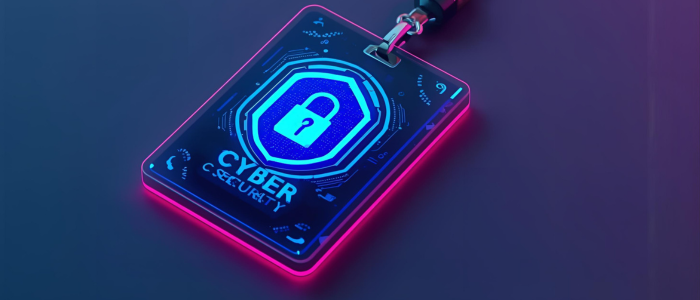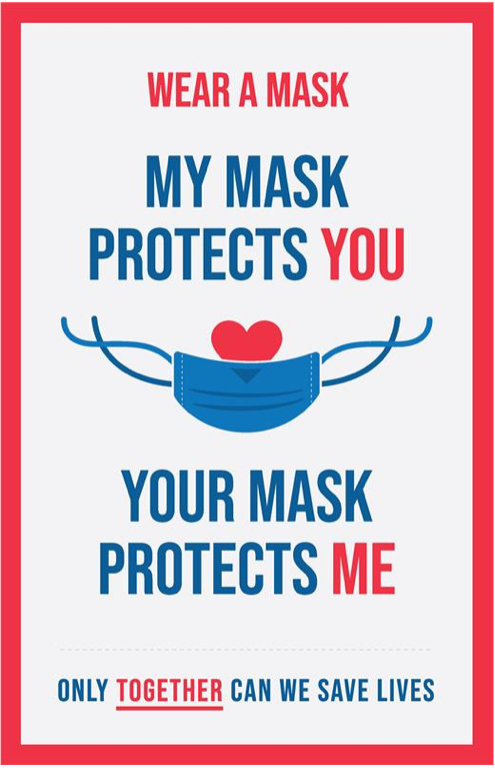(6 min read)
What badges and mask-wearing reveal about security culture
There’s a curious power in the visible. During the pandemic, public health leaders didn’t merely tell people to wear masks: by its very nature mask-wearing was seen. In shops, on the Tube, Subway or Metro and even in government press briefings, the mask became more than medical apparatus. It became a behavioural signal, a symbol of care, identity and, above all, belonging.
This is not trivial. It’s not aesthetic. It’s behavioural science at work.

And if you’re a Chief Information Security Officer, or indeed any leader concerned with internal security culture, there’s a potent lesson here: security doesn’t only reside in protocols and perimeters. It resides in people, and in the symbols they display.
The badge, that humble piece of plastic on a lanyard, is your mask.
In this collaborative piece, Anastasiya Tretyak (EY) and Mark Brown (Psybersafe) explore how positive associations can build bridges between security teams and employees and how you can apply those insights to increase secure behaviour adoption at your organisation.
From functional to symbolic
In a world of zero-trust architectures and biometric endpoints, it’s easy to dismiss the badge as an outdated artefact.
But, like masks, its power isn’t purely functional. It’s psycho-logical[1], a visible act of security, a signal that says: “I belong here, I follow the rules, I care about protecting us.” At least, it can be.
During COVID, we didn't wear masks in our own cars or empty corridors. We wore them in the presence of others — not just for protection, but for reassurance. One message that had a strong impact was: I wear this for you, and you wear yours for me.
This is the psychology of reciprocity at play.
The same applies to the badge. It’s not about gatekeeping. It’s about signalling a shared commitment. Not just to the rules, but to each other.
 Why visibility matters
Why visibility matters
Behavioural science teaches us that what’s visible becomes normal. And when
people see colleagues wearing badges inside the office, consistently, it shifts the norm from compliance to culture. This is social proof in action, one of Robert Cialdini’s most enduring insights. Dr Robert Cialdini is Regents’ Professor Emeritus of Psychology and Marketing at Arizona State University and author of the hugely ‘influential’ book Influence – the psychology of persuasion[2]. The principle of Social Proof says that People look to what others are doing to decide what they should do, especially when they are uncertain and when others are ‘like them’. We humans are very social beings: we need to belong, to our family, our tribe, our team.
During the pandemic, mask adoption spiked not when people were convinced of thescience, but when they saw others — friends, neighbours, shopkeepers — adopting the behaviour. The same psychology can be applied to badge-wearing: it’s not just the rule that persuades; it’s the ritual.
This means a CISO doesn’t need to lead by enforcement. They need to lead by example.
Rules are rules, badges must be worn, but make it frictionless
It’s easy to underestimate the power of small hassles. A twisted lanyard, a badge that flips backwards, or a clip that pinches your jumper. Each minor annoyance chip away at compliance. And so, one of the most powerful interventions a security team can make is this: make wearing a badge easy, comfortable, and obvious.
Think of it like hand sanitiser during COVID — the more accessible it was (on every desk, by every door), the more people used it. The behaviour wasn’t driven by hygiene lectures. It was driven by convenience and cues.
This is the ability + prompt formula from BJ Fogg’s Behaviour Model[3]. Remove friction, add prompts. Put a small “Badge On?” sticker by the coffee machine. Offer lanyards people want to wear — not the thin, budget ones handed out at trade shows. These aren’t perks, they’re environmental design tools.
Trusted voices over distant rules
During COVID, messaging from doctors and nurses often worked better than fromabstract agencies. Why? Because of authority and liking, two principles Cialdini identified decades ago. We’re influenced not by the loudest voice, but by the one we trust.
If your badge policy comes via a bland email from “Corporate Security”, expect compliance to lag. But if the message comes from the popular Head of Engineering, or the respected facilities team lead — with warmth, clarity, and perhaps a little wit — it lands differently.
Let badge norms be led by trusted peers, not faceless departments.
Set clear contexts, not blanket rules
Humans are surprisingly obedient – when the rules are clear and fair. During the pandemic, confusion over when and where to wear masks caused far more resistance than the act itself. (“Do I wear it walking into the restaurant, but not when I’m seated? What about outdoors?”)
The solution is not more rules, but better framed ones. With badges, the same applies: be precise.
“Badges must be worn inside the building, visibly, at all times. Once outside, feel free to remove them.”
This small concession (removal outside) is important. It respects autonomy – another behavioural lever. People are more likely to comply in context when they know they can opt out beyond it.
(In fact, depending on the information you show on the badge you may actually want to encourage people to NOT wear badges outside – but explain why.)
Rituals beat rules
One of the unsung heroes of behavioural change is consistency through ritual. We don’t brush our teeth for rational health reasons (ask any behavioural scientist why toothpaste tastes minty, not antiseptic). We do it because it feels normal, ritualistic, right.
What if badging-in were treated like clocking-in used to be? A small moment that says, “I’ve arrived. I’m at work now”. Rituals can be subtle. A “badge tap” sound. A nod from reception. Even a morning greeting: “Badge on? You’re good to go.”
 These reinforce not rules, but identity, that powerful motivator of long-term behaviour.
These reinforce not rules, but identity, that powerful motivator of long-term behaviour.
Let people take ownership
In mask campaigns, success came when people felt masks were theirs. Think local designs, team colours, NHS rainbows. Scarcity and self-expression increased compliance, a textbook example of scarcity driving perceived value. With badges, standardisation is essential for recognition, but customisation within constraints can be powerful.
Offer department-coloured lanyards. Recognise “100% badged-up” teams. For internal events, introduce temporary sticker overlays, fun and light-hearted, but reinforcing the badge as identity.
This isn’t dressing up, it’s behavioural reinforcement.
From mandate to movement
The ultimate goal is not to make people wear badges.
It’s to make them want to wear badges, because doing so signals professionalism, care, and cultural belonging. This is Cialdini’s seventh principle, Unity, where influence is strongest when behaviour aligns with identity.
When badge-wearing becomes part of “who we are around here,” resistance fades. And that’s the real shift: from enforcement to environment, from rule to ritual, from mandated security to visible trust.
Not only that. The badge is also a prompt for security and secure behaviours. “You’re now in an environment where security, and cyber security, is important”. It creates a subtle shift in behaviour, to protect the organisation and its clients against breaches and cybercrime.
Let the everyday work for you
To the rational mind, badge-wearing is trivial. But to the behavioural strategist, it’s gold dust. 
Because in the real world, culture is built not on policy, but on visible, repeated, socially reinforced behaviours. Like brushing teeth, wearing a mask, washing hands. Tapping a badge. Security doesn’t just need enforcement. It needs theatre. Symbolism. Subtle social choreography. And as we learned during the pandemic, sometimes it’s not the logic of a policy that matters. It’s the psycho-logic, as my friend Rory Sutherland likes to say.
The badge doesn’t just let you in. It lets others know you’re one of us.
[1] Rory Sutherland, in his book Alchemy: The Power of Ideas That Don’t Make Sense
[2] Dr Robert Cialdini – Influence, the psychology of persuasion
[3] Behaviour = Motivation + Ability + Prompt, or B=MAP: BJ Fogg – Tiny Habits
We love behavioural science. We’ve studied it and we know it works. If you want to know more about the science of persuasion and influence and behavioural science in general have a look at our sister site https://influenceinaction.co.uk/
Sign up to get our monthly newsletter, packed with hints and tips on how to stay cyber safe.
 Mark Brown is a behavioural science expert with significant experience in inspiring organisational and culture change that lasts. If you’d like to chat about using Psybersafe in your business to help to stay cyber secure, contact Mark today.
Mark Brown is a behavioural science expert with significant experience in inspiring organisational and culture change that lasts. If you’d like to chat about using Psybersafe in your business to help to stay cyber secure, contact Mark today.